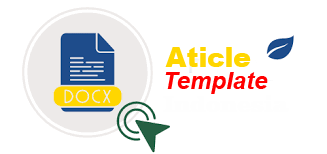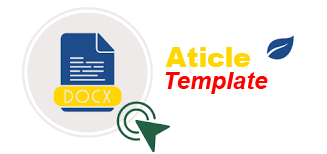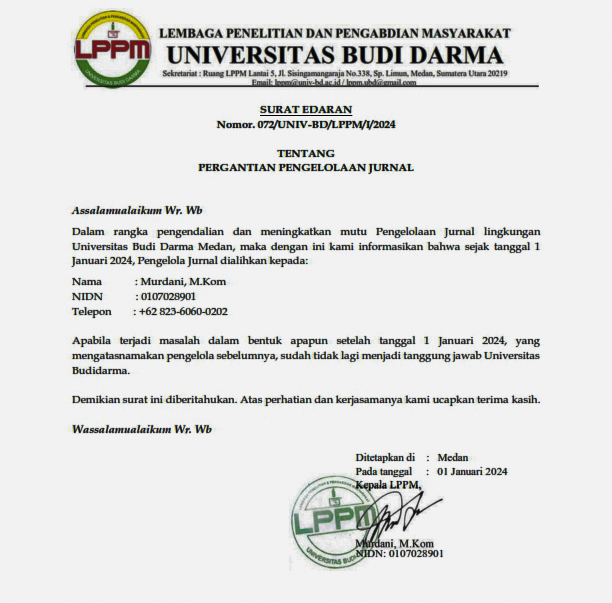Penerapan Feature Selection Pada Algoritma Decision Tree Untuk Menentukan Pola Rekomendasi Dini Konseling
DOI:
https://doi.org/10.30865/json.v4i2.5267Keywords:
Counseling, Decision Tree, Feature Selection, Forward Selection, Algoritma Genetika.Abstract
Early detection in providing recommendations for student counseling is very important, therefore you can assess the student's potential, beliefs, and attitude as early as possible. The problem that arises in this case is how to detect a student early so that he or she needs counseling assistance or not so that it can be identified early to minimize the risk of further psychological conditions. This article proposes a data mining model using a decision tree to classify counseling recommendations for students. In addition, to improve the resulting accuracy performance, a feature selection method is proposed using forward selection and genetic algorithms. The stages of the research were carried out by pre-processing the data, implementing algorithms, validating data, and optimizing the model. The experimental results show that the best level of accuracy using the decision tree model is 95.64%. It increases to 96.91% after optimization using the genetic algorithm.References
C. A. W. Morris, K. L. Wester, C. T. Jones, and S. Fantahun, “School Counselors and Unified Educator–Counselor Identity: A Data-Informed Approach to Suicide Prevention,†Prof. Sch. Couns., vol. 24, no. 1_part_3, p. 2156759X2110119, Jan. 2021, doi: 10.1177/2156759X211011909.
G. Ping, “Application of Decision Tree Algorithm in Mental Health Evaluation,†2022, pp. 524–529.
O. W. A. Wilson, C. M. Bopp, Z. Papalia, M. Duffey, and M. Bopp, “College Students’ Experiences and Attitudes Toward Physical Activity Counseling,†J. Nurse Pract., vol. 16, no. 8, pp. 623–628, Sep. 2020, doi: 10.1016/j.nurpra.2020.06.006.
J. M. Faro et al., “U.S. medical students personal health behaviors, attitudes and perceived skills towards weight management counseling,†Prev. Med. Reports, vol. 27, p. 101814, Jun. 2022, doi: 10.1016/j.pmedr.2022.101814.
C. Carter, J. Harnett, I. Krass, and I. Gelissen, “Attitudes, behaviours, and self-reported confidence of Australian pharmacy students and interns towards nutritional counselling,†Curr. Pharm. Teach. Learn., vol. 14, no. 11, pp. 1411–1419, Nov. 2022, doi: 10.1016/j.cptl.2022.09.028.
V. Kuryluk, J. McAuley, and M. Maguire, “Naloxone counseling: Confidence and attitudes of student pharmacists after a volunteer syringe exchange experience,†Curr. Pharm. Teach. Learn., vol. 12, no. 4, pp. 429–433, Apr. 2020, doi: 10.1016/j.cptl.2019.12.027.
H. Lim and J. C. Barner, “Impact of a pilot workshop on student pharmacists’ confidence and comfort in counseling patients at risk for maternal mortality,†Curr. Pharm. Teach. Learn., vol. 14, no. 1, pp. 71–82, Jan. 2022, doi: 10.1016/j.cptl.2021.12.001.
S. Chircu, “Career Counseling Needs for Students – A Comparative Study,†Procedia - Soc. Behav. Sci., vol. 127, pp. 549–553, Apr. 2014, doi: 10.1016/j.sbspro.2014.03.308.
A. Naik and L. Samant, “Correlation Review of Classification Algorithm Using Data Mining Tool: WEKA, Rapidminer, Tanagra, Orange and Knime,†Procedia Comput. Sci., vol. 85, pp. 662–668, 2016, doi: 10.1016/j.procs.2016.05.251.
M. Gordan et al., “State-of-the-art review on advancements of data mining in structural health monitoring,†Measurement, vol. 193, p. 110939, Apr. 2022, doi: 10.1016/j.measurement.2022.110939.
O. Somantri, “An Optimize Weights Naïve Bayes Model for Early Detection of Diabetes,†Telematika, vol. 15, no. 1. scholar.archive.org, 2022, doi: 10.35671/telematika.v15i1.1307.
A. M. H. Chen, S. Cailor, T. Franz, N. Fox, P. Thornton, and M. Norfolk, “Development and validation of the self-care counseling rubric (SCCR) to assess student self-care counseling skills,†Curr. Pharm. Teach. Learn., vol. 11, no. 8, pp. 774–781, Aug. 2019, doi: 10.1016/j.cptl.2019.04.006.
K. B. Garza, N. S. Hohmann, J. Kavookjian, and E. L. Kleppinger, “Assessment of student performance on a mock new prescription counseling session and an objective structured clinical examination across five years,†Curr. Pharm. Teach. Learn., vol. 12, no. 9, pp. 1046–1055, Sep. 2020, doi: 10.1016/j.cptl.2020.04.018.
L. Carvalho, L. Mourão, and C. Freitas, “Career counseling for college students: Assessment of an online and group intervention,†J. Vocat. Behav., p. 103820, Nov. 2022, doi: 10.1016/j.jvb.2022.103820.
M. Li and H. Yang, “Decision Tree Algorithm in College Students’ Health Evaluation System,†2021, pp. 705–710.
A. Bottcher, V. Thurner, T. Hafner, and J. Hertle, “A Data Science-based Approach for Identifying Counseling Needs in first-year Students,†in 2021 IEEE Global Engineering Education Conference (EDUCON), Apr. 2021, pp. 420–429, doi: 10.1109/EDUCON46332.2021.9454042.
Y. Xue, H. Zhu, J. Liang, and A. Słowik, “Adaptive crossover operator based multi-objective binary genetic algorithm for feature selection in classification,†Knowledge-Based Syst., vol. 227, p. 107218, Sep. 2021, doi: 10.1016/j.knosys.2021.107218.
P. Agrawal, H. F. Abutarboush, T. Ganesh, and A. W. Mohamed, “Metaheuristic Algorithms on Feature Selection: A Survey of One Decade of Research (2009-2019),†IEEE Access, vol. 9, pp. 26766–26791, 2021, doi: 10.1109/ACCESS.2021.3056407.
I. Markoulidakis, I. Rallis, I. Georgoulas, G. Kopsiaftis, A. Doulamis, and N. Doulamis, “Multiclass Confusion Matrix Reduction Method and Its Application on Net Promoter Score Classification Problem,†Technologies, vol. 9, no. 4, p. 81, Nov. 2021, doi: 10.3390/technologies9040081.
C. S. Hong, “Confusion plot for the confusion matrix,†J. Korean Data Inf. Sci. Soc., vol. 32, no. 2, pp. 427–437, Mar. 2021, doi: 10.7465/jkdi.2021.32.2.427.
B. Charbuty and A. Abdulazeez, “Classification Based on Decision Tree Algorithm for Machine Learning,†J. Appl. Sci. Technol. Trends, vol. 2, no. 01, pp. 20–28, Mar. 2021, doi: 10.38094/jastt20165.
V. Kotu and B. Deshpande, “Feature Selection,†in Data Science, Elsevier, 2019, pp. 467–490.
A. Meyer-Baese and V. Schmid, “Feature Selection and Extraction,†in Pattern Recognition and Signal Analysis in Medical Imaging, Elsevier, 2014, pp. 21–69.
E. Wirsansky, Hands-on genetic algorithms with Python : applying genetic algorithms to solve real-world deep learning and artificial intelligence problems. Packt Publishing Ltd, 2020.
F. Buontempo, Genetic Algorithms and Machine Learning for Programmers: Create AI Models and Evolve Solutions (Pragmatic Programmers) 1st Edition. 2019.
Downloads
Published
How to Cite
Issue
Section
License

This work is licensed under a Creative Commons Attribution 4.0 International License
Authors who publish with this journal agree to the following terms:
- Authors retain copyright and grant the journal right of first publication with the work simultaneously licensed under Creative Commons Attribution 4.0 International License that allows others to share the work with an acknowledgment of the work's authorship and initial publication in this journal.
- Authors are able to enter into separate, additional contractual arrangements for the non-exclusive distribution of the journal's published version of the work (e.g., post it to an institutional repository or publish it in a book), with an acknowledgment of its initial publication in this journal.
- Authors are permitted and encouraged to post their work online (e.g., in institutional repositories or on their website) prior to and during the submission process, as it can lead to productive exchanges, as well as earlier and greater citation of published work (Refer to The Effect of Open Access).





